Global Design: Singapore’s Capella Taipei shaped by relaxed rhythms of its indie locale
Sign up now: Get ST's newsletters delivered to your inbox
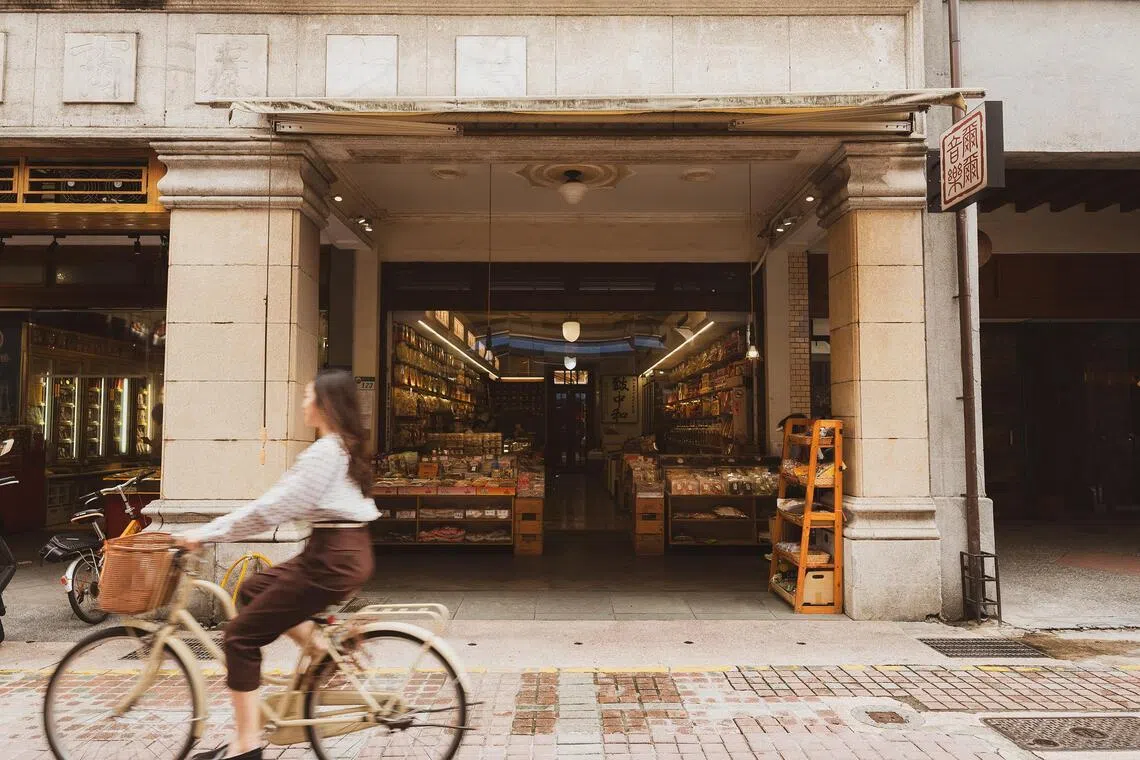
Capella Taipei is infused with the spirit of its surrounding Songshan neighbourhood.
PHOTO: CAPELLA TAIPEI
Karen Tee
Follow topic:
TAIPEI – Situated on the second floor of a nondescript building in Taipei’s Fujin Street is Words, a print and stationery shop where the air smells faintly of paper and ink.
It is the sort of place you find only if you know it exists; its ground-floor entrance is marked simply by a discreet sign above the doorbell.
This quiet street in the residential Songshan district has, in recent years, blossomed into a bohemian enclave lined with modern eateries, indie cafes, intimate galleries and carefully curated boutiques, including a concept store by Japanese lifestyle brand Beams. Yet, it retains a relaxed, lived-in atmosphere.
As I browse vintage postcards, bookplates and ukiyo-e (Japanese woodblock art) prints, a bespectacled man strolls in and greets the proprietor.
Drawn into their conversation, I learn he is illustrator Ariel Chi, whose confident, whimsical strokes of ink capture Taipei’s spirit with poetic ease.
His work appears on the cocktail menu at Plume, the lobby lounge of the newly opened Capella Taipei, and on a series of hotel stationery. As we talk, he offers to sketch my portrait in a spontaneous, generous gesture as charmingly unhurried as the street outside.
That same spirit of neighbourhood character infusing curated spaces defines Capella Taipei. Designed by acclaimed architect Andre Fu, the hotel is the first luxury opening in the Taiwanese capital in a decade.
The Hong Kong-based Fu – whose work includes The Upper House in Hong Kong, Hotel The Mitsui Kyoto in Japan and The Fullerton Bay Hotel in Singapore – has created a space that blends contemporary elegance with the intimacy of a private residence.
“My design philosophy is about provoking new ways of thinking about what luxury means,” he says. “The overall sensibility reflects the aesthetics I imagined for this contemporary mansion, a feeling of authenticity in the details. My vision is to capture this sensibility with a residential approach.”
The resulting 86-room “modern mansion” in Dunhua North Road, a major boulevard lined with some 2,000 banyan trees, marks the Singapore-based luxury hotel group’s first entry into the Taiwanese market.
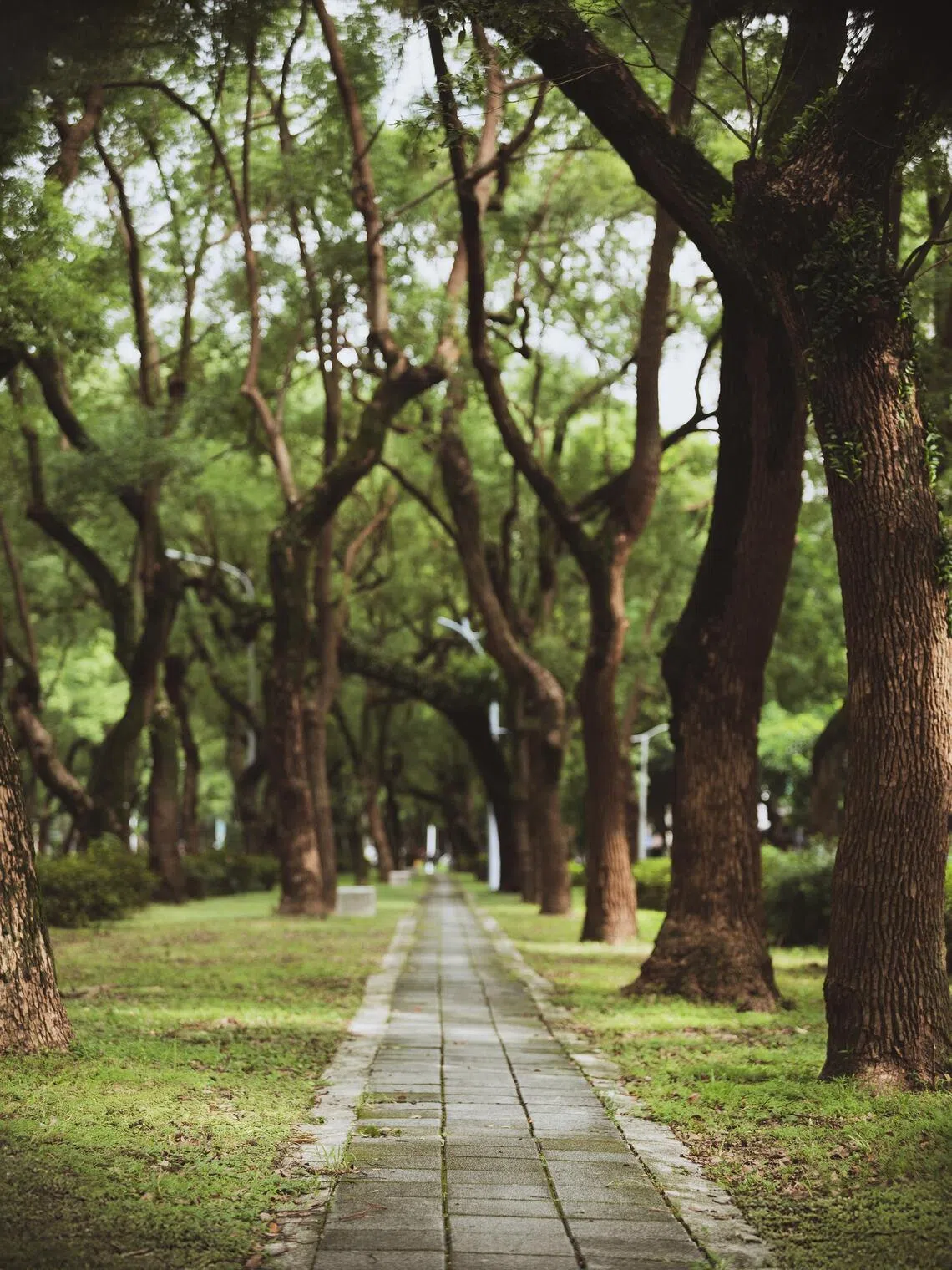
Capella Taipei sits in a lush neighbourhood that includes this local park.
PHOTO: CAPELLA TAIPEI
Many of its design details, like lush greenery and sweeping vistas, reflect the vibe of its surroundings. In this north-eastern pocket of the Taipei Basin, broad tree-lined streets, playgrounds and low-rise apartments offer a contrast to the high-density skyline elsewhere in the city.
Fu says: “My impression of Taipei is shaped by its pace of life. Whenever I am here, it strikes me time and again that the city moves to a slightly more relaxed rhythm than most Asian cities that I frequently visit. I find this extremely mesmerising.
“Capella Taipei is a retelling of my personal journey in discovering the city. My vision revolves around creating a quietly curated private mansion, incorporating contemporary touches and cultural nuances.”
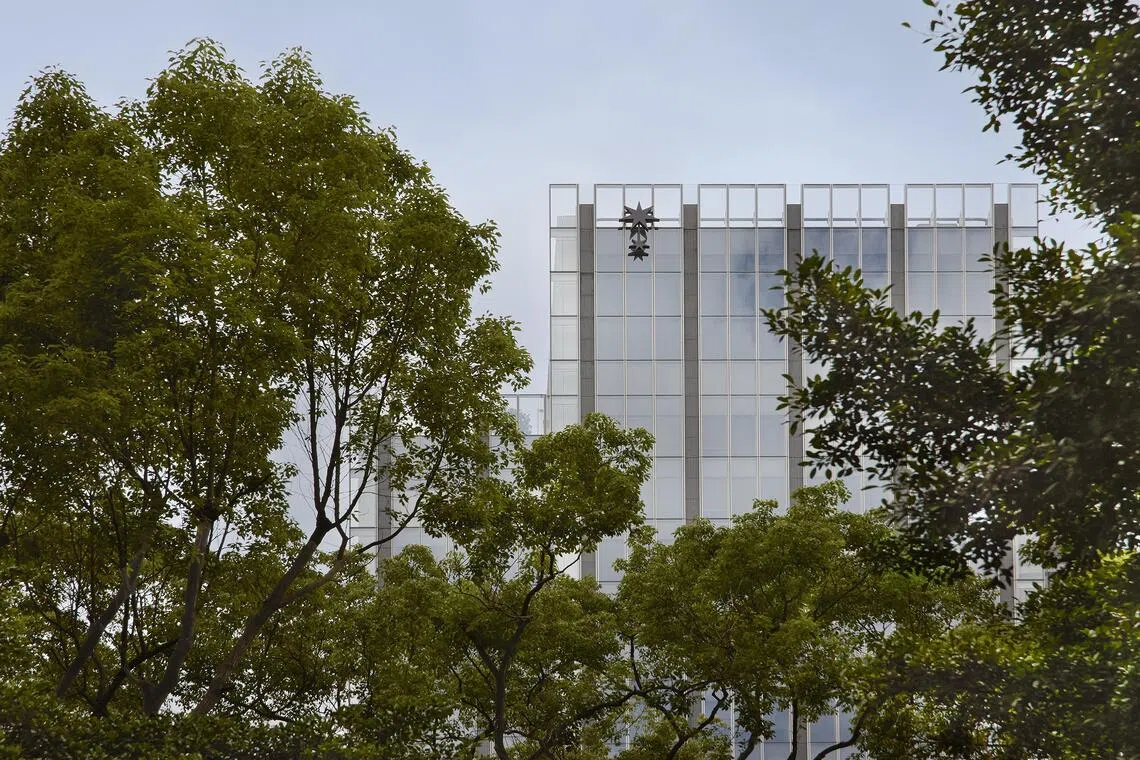
Capella Taipei is situated in a north-eastern pocket of the lush Taipei Basin.
PHOTO: CAPELLA TAIPEI
Immediately, the arrival salon sets the tone. A tiered console table displays ceramic vessels, moss arrangements and art books that invite browsing – and perhaps a selfie.
A commissioned tapestry by Taiwanese artist Lee Chen-Lin captures the ethereal beauty of Taiwan’s misty peaks and verdant valleys. It is the kind of tableau a global traveller might carefully select to display in his or her own home.

Capella Taipei’s entrance and arrival zone.
PHOTO: CAPELLA TAIPEI
French artist Elsa Jeandedieu’s mural at all-day dining venue Plume depicts the national bird, the Taiwan blue magpie, against rich terracotta and camel tones echoed in the space. A hand-crafted spiral staircase in the Rotunda, with a calla-lily curve and an 800-block hardwood handrail, leads to the wellness floor.
This, Fu says, is his favourite feature of the space. “Threading through the spiral is a wooden sculpture by Mexican artist Joel Escalona, which creates a silent dialogue with the fluid form of the staircase.”
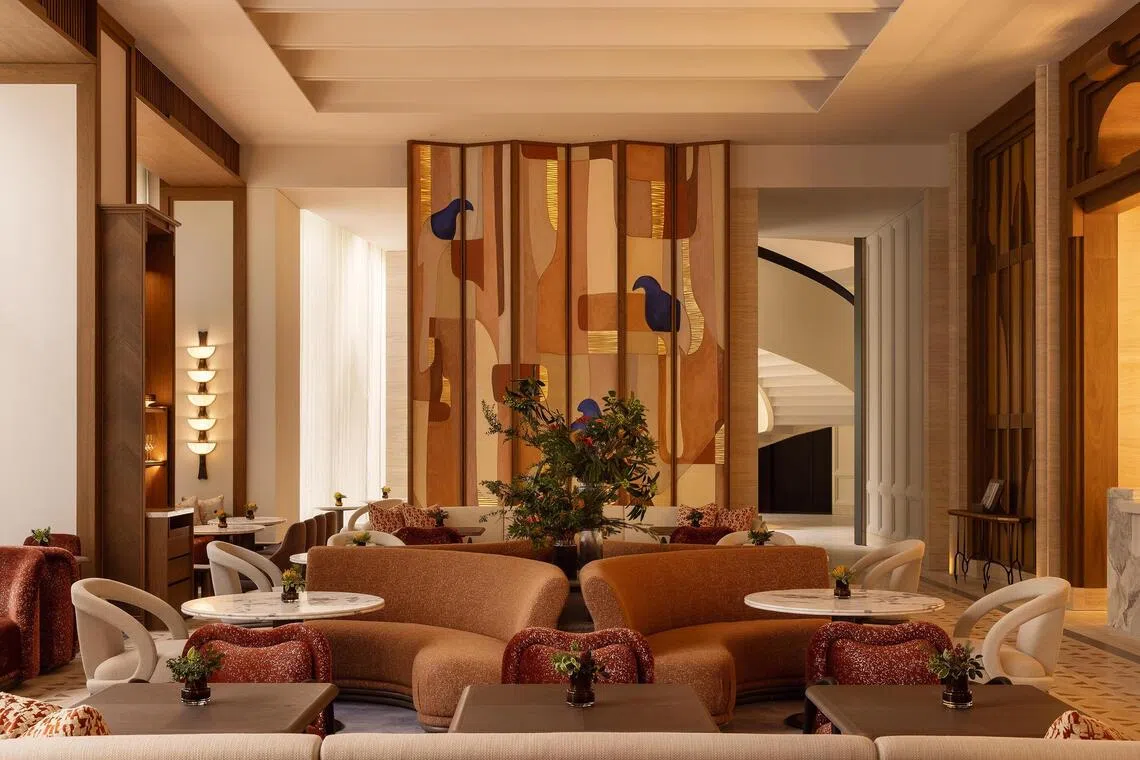
A mural of the national bird, the Taiwan blue magpie, at Plume in Capella Taipei.
PHOTO: CAPELLA TAIPEI
Upstairs, the guest rooms and suites evoke the same understated sophistication. Floor-to-ceiling windows frame panoramic views of the Taipei skyline, while interiors pair muted palettes with tactile materials such as oak, slate and linen, creating a warmth that feels both lived-in and refined.
Like elsewhere in the hotel, much of the furniture is custom-designed by Andre Fu Studio or drawn from his retail collection, reinforcing the home-like sensibility.
Subtle nods to Taiwan’s craft traditions appear throughout, from marquetry patterns on tableware and carpets to decorative ceramics sourced from local artisans, offering a sense of place.
The minibar, which includes a selection of complimentary non-alcoholic drinks and snacks, features locally sourced options like dried pineapple slices and coffee drip bags from a Taiwanese coffee plantation.

Capella Taipei’s Deluxe Room.
PHOTO: CAPELLA TAIPEI
At the pinnacle is the singular Capella Suite. Spanning 228 sq m, it feels like a luxury penthouse, with living and dining rooms overlooking the city, including the unmistakable Taipei 101. A private entertainment nook and in-room spa suite make it an urban retreat in the truest sense.
The mid-tier Premier Room is a rare prize in Taipei, thanks to a private balcony – an uncommon luxury in the city’s hotels – which is perfect for morning coffee or twilight views.

Happy hour and canapes in the Living Room lounge at Capella Taipei.
PHOTO: KAREN TEE
What truly brings the precinct to life are the various activities that the hotel offers. The Living Room, a Capella Hotels signature, serves not only as the check-in area but also as a relaxed lounge offering canapes, snacks and beverages throughout the day.
It encourages mingling with fellow travellers and with the Capella Culturists, the hotel’s resident hosts who design personalised itineraries, insider tours and cultural encounters through its Capella Curates programme.
A standout is the Songshan Reverie walking tour of the nearby Songshan and Minsheng districts (TWD3,500 or about SG$150 a person before tax), conceived by the hotel’s general manager, Mr Dennis Laubenstein, and personally led by him whenever his schedule allows.
Formerly at Capella Hanoi, Mr Laubenstein relocated to Taipei to oversee the hotel’s opening and chose to live in the neighbourhood. Over several months, he explored every alley and park, ultimately crafting this two-hour stroll.
“This is a neighbourhood that lends itself to slow travel. You have to spend time exploring the streets to fully understand its appeal,” he says, as we pass Minsheng Park, where retirees gather for a game of mahjong and pause to admire a mural by Ariel Chi.
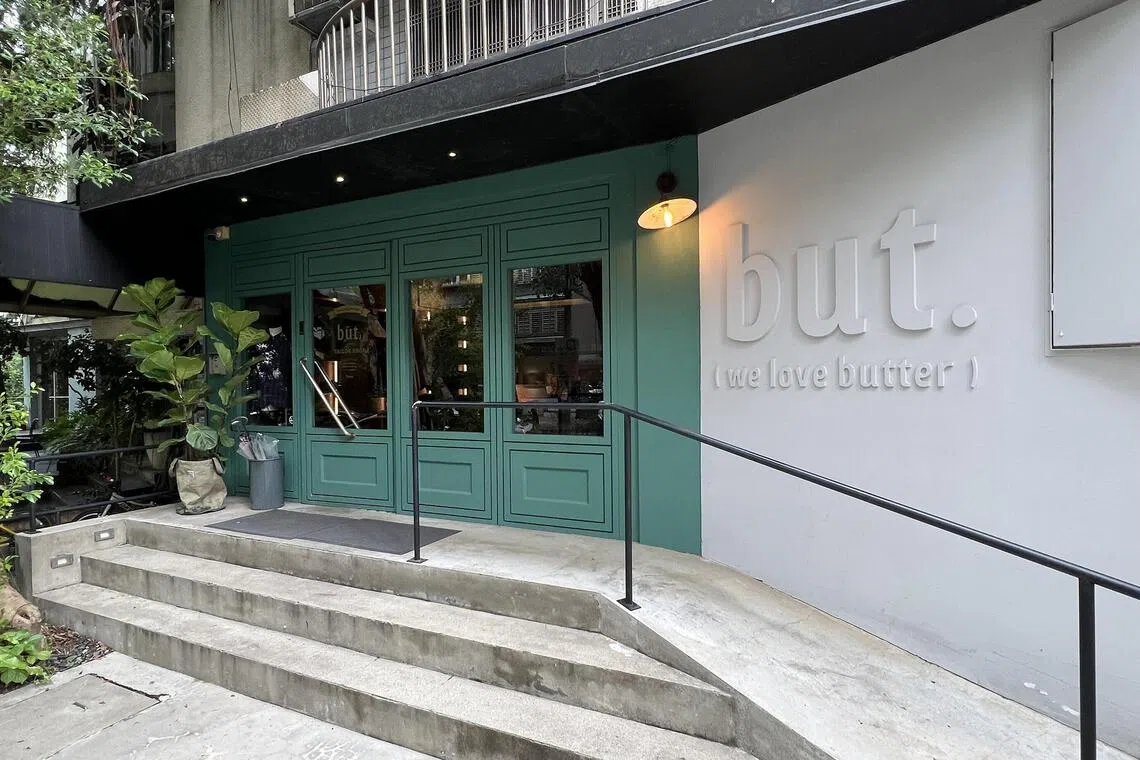
The cafe But We Love Butter is accessed through a tailor’s shop.
PHOTO: KAREN TEE
We peek into offbeat local favourites like But We Love Butter, a “speakeasy” cafe tucked behind a small tailor’s shop. We stop by Sunny Hills for its famed pineapple cakes.
Back at the hotel, its five dining concepts – soon to be joined by a standalone three-storey Glasshouse with three distinct bar experiences – are as much about place as they are about palate.

Capella Taipei’s Ember28 is an open-kitchen charcoal grill swathed in plush velvet seating.
PHOTO: CAPELLA TAIPEI
Among them is Ember 28, an open-kitchen charcoal grill swathed in plush velvet seating, embossed leather booths and the soft glow of twin crystal chandeliers handcrafted by Czech glassmaker Preciosa.
Under the direction of Taiwanese head chef Lance Wang, the menu celebrates seasonal bounty from nearby waters and farms, including bluefin tuna available only for two months a year, and a dry-aged pork chop glazed with Kavalan whisky sauce.
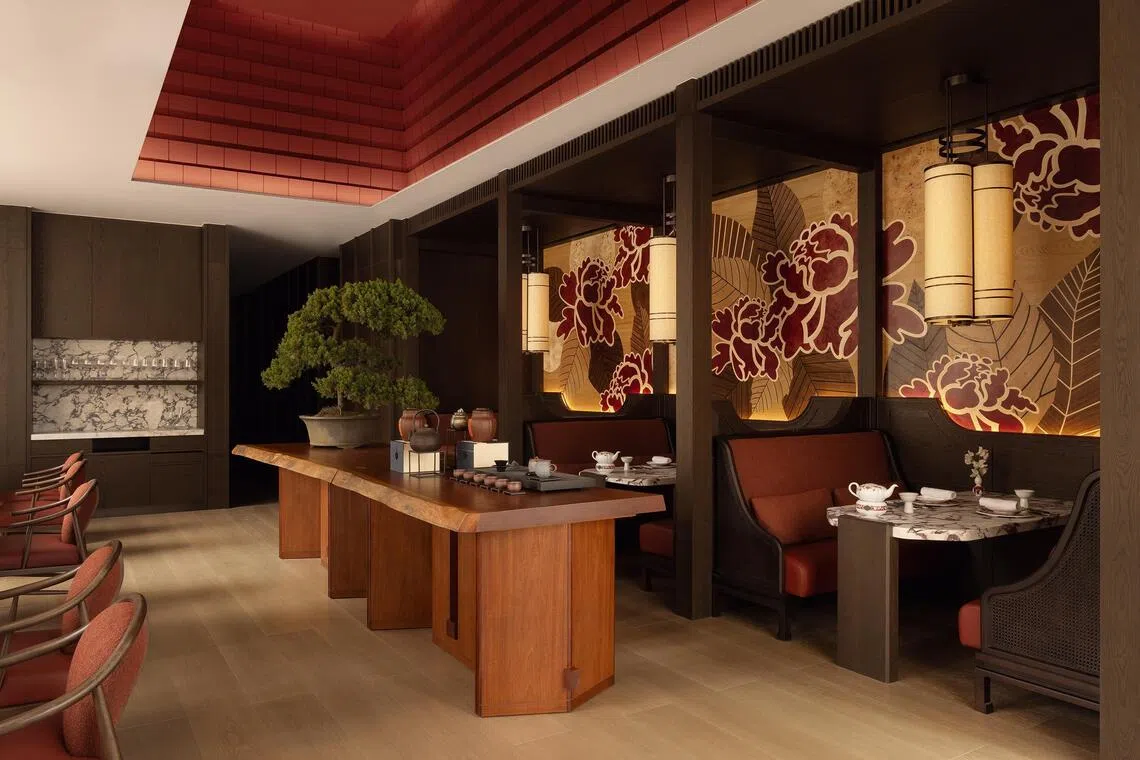
Capella Taipei’s Cantonese restaurant Rong Ju is designed with magnolia motifs.
PHOTO: CAPELLA TAIPEI
Meanwhile, modern Cantonese restaurant Rong Ju impresses with an 8m-high ceiling clad in terracotta tiles reminiscent of traditional rooftops. A striking marquetry wall blooms with magnolia motifs, a symbol of good fortune.
Through the day, the hotel’s Capella Moments programme, complimentary for guests, offers glimpses into local life, from tea appreciation sessions to making Hakka lei cha.
I join several during my stay, but the one experience that lingers is the morning ritual in the courtyard, beneath the sheltering canopy of a historic banyan tree that was carefully protected even as the building was constructed.
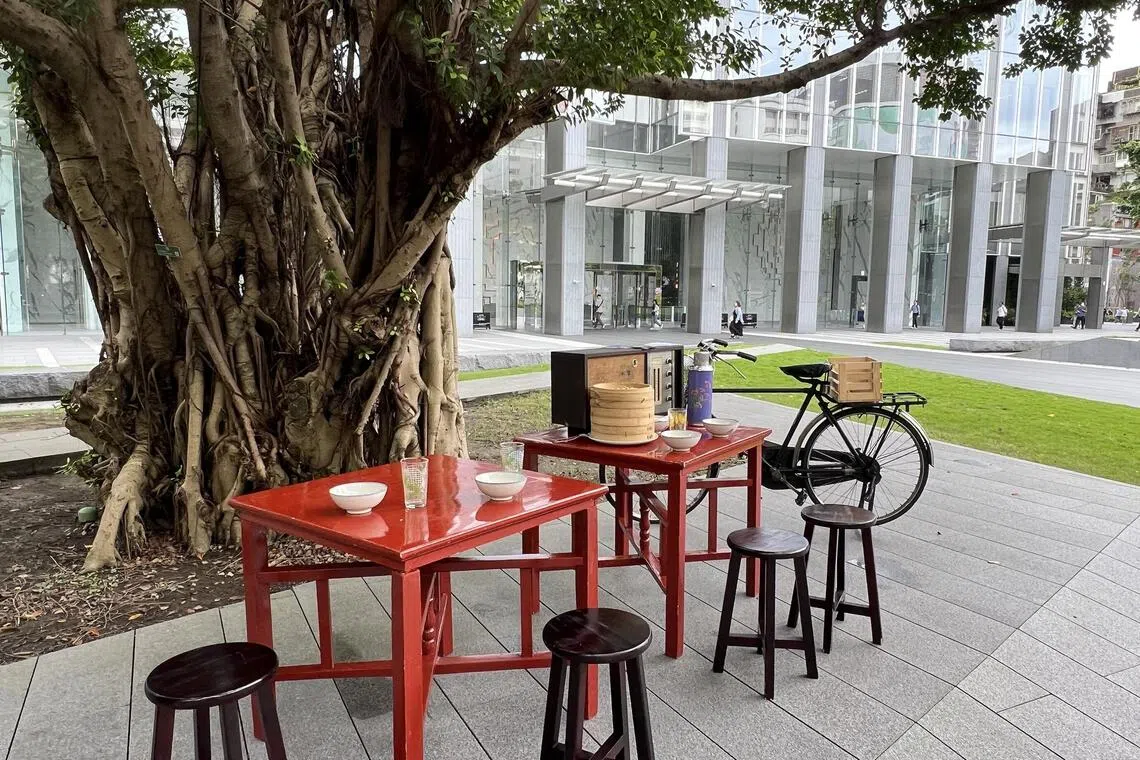
A traditional breakfast under a historic banyan tree at Capella Taipei.
PHOTO: KAREN TEE
As I enjoy a simple local snack of soya milk and scallion pancakes, a Culturist shares the history of how neighbours once gathered under these same branches.
During that early hour, before rush-hour traffic begins streaming in, I feel like I have been embraced, however briefly, into the fabric of the place.
Global Design is a series that explores design ideas and experiences beyond Singapore.
Karen Tee writes on lifestyle issues from Singapore.
Correction note: In an earlier version of the story, the artist’s name was spelled Elsa Rameau. This correct name is Elsa Jeandedieu.

